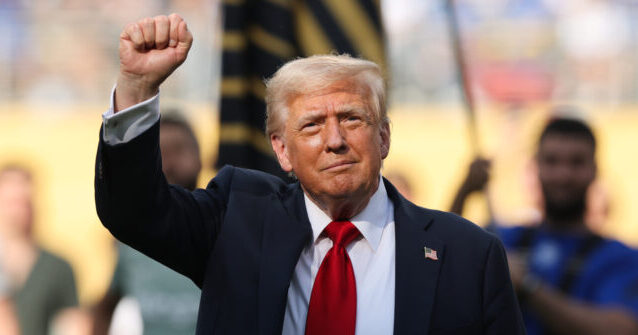U.S. import prices have risen less than expected since President Trump began imposing tariffs, according to data released Wednesday by the Bureau of Labor Statistics, suggesting that foreign manufacturers are absorbing a significant share of the tariff burden.
In June, import prices climbed just 0.1 percent, matching the increase in overall consumer prices that was reported by the Department of Labor on Tuesday. The producer price index, which focuses on domestic prices and excludes imports, was flat for the month.
The year-over-year change is now a decline of 0.2 percent, compared with a year-over-year increase of 1.7 percent in February. Import prices have now declined on a year-over-year basis for two consecutive months.
The Trump administration announced new tariffs in April and May. While many economists and anti-tariff critics of the administration insisted that U.S. consumers would bear the burden of these tariffs, declining import prices suggest that they are actually being paid for by foreign producers. Over the past three months, import prices from China are down at an annualized rate of 3.2 percent, suggesting that Chinese exporters have cut prices in response to the tariffs.
Capital goods prices are up at a three-month, seasonally-adjusted annualized rate of 1.6 percent. Consumer goods excluding autos are also up at an annualized rate of 1.6 percent since April. Prices of industrial materials and autos are down slightly.
Overall import prices are up at a three-month annualized rate of 1.9 percent, a rate that is historically consistent with the Federal Reserve’s two percent target for inflation. The core consumer price index in the U.S. is up by a steeper 2.4 percent annualized rate and the core producer price index is up at a 2.8 percent rate. Which means import prices are rising more slowly than domestic consumer prices, suggesting that foreign producers may be absorbing tariff costs rather than passing them fully on to U.S. consumers.
Import prices are measured before tariffs are applied, capturing the price U.S. buyers pay to foreign sellers at the point of export. If foreign producers are raising prices at or above the overall rate of inflation, it suggests that importers are absorbing the cost of the tariffs. But if import prices rise by less than the overall rate of inflation in the U.S. or actually declne, it indicates that foreign sellers are likely cutting prices to retain market share, thereby absorbing some or all of the tariff burden themselves.
Across the major categories of imported goods, prices have either declined or risen at a pace below or near the Fed’s 2 percent inflation target.
The slow pace of increases of import prices reinforces the view that tariffs are not translating into higher costs for American consumers. Instead, the data suggest that foreign producers are absorbing a significant portion of the tariff costs in order to remain competitive in the U.S. market.
Read the full article here


